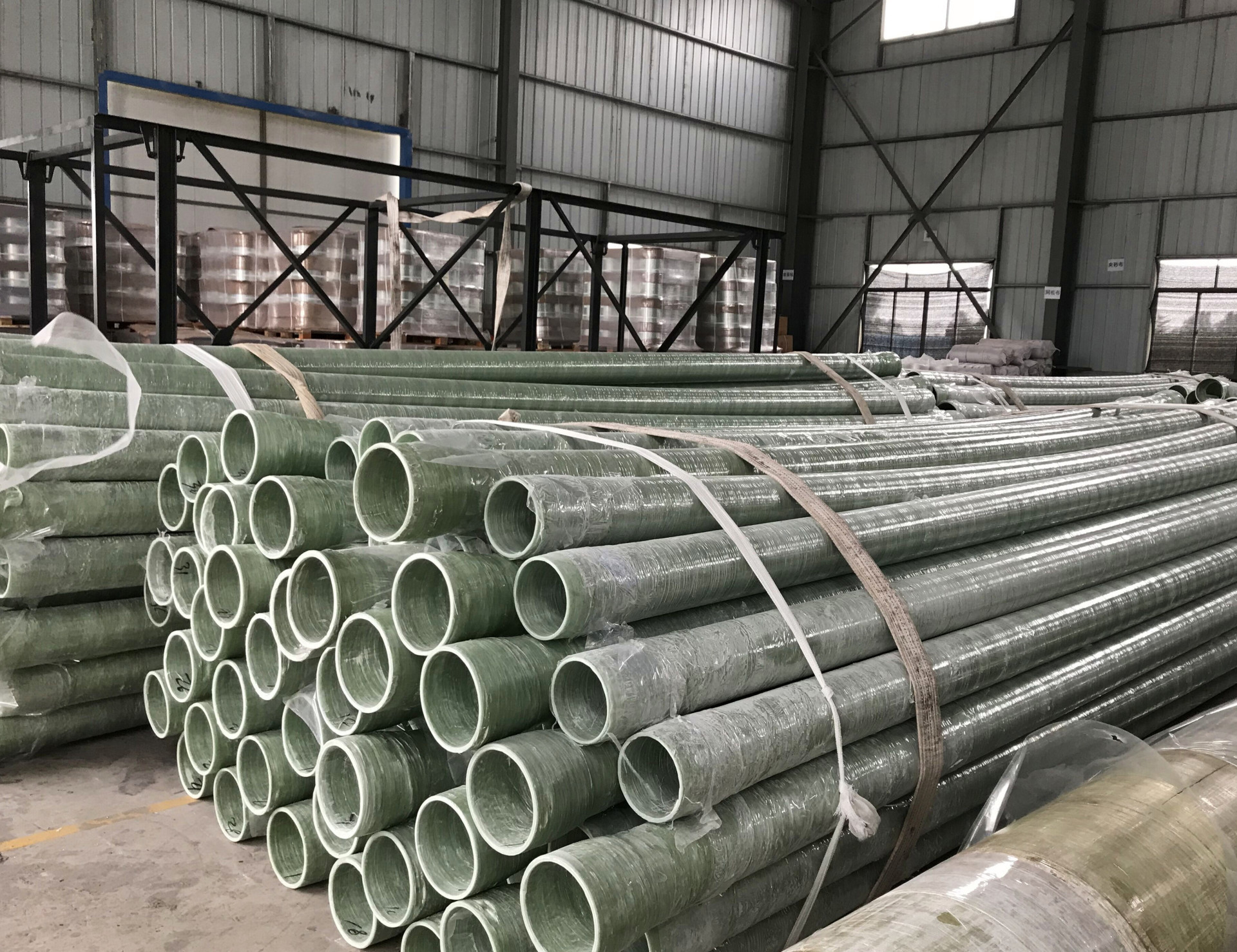What are the advantages of fiberglass reinforced sand pipes? How to repair them after damage?
Release time:
2023/05/11
What are the advantages of fiberglass reinforced sand pipes? How to repair them after damage? The advantages of fiberglass reinforced sand pipes are as follows: 1. Good corrosion resistance Fiberglass reinforced sand pipes are resistant to acids, alkalis, and soil erosion, and can transport groundwater, seawater, industrial wastewater, and highly corrosive liquids. Special pipe materials are manufactured using appropriate corrosion-resistant materials based on the transported medium, and the sand-filled pipes can maintain all the characteristics of the original fiberglass products (lightweight, high strength, corrosion resistance, insulation, heat insulation, and design).

What are the advantages of fiberglass sandwiched pipes? How to repair them after damage?
The advantages of fiberglass sandwiched pipes are as follows:
1. Good corrosion resistance
Fiberglass sandwiched pipes are resistant to acid, alkali, and soil erosion, and can transport groundwater, seawater, industrial wastewater, and highly corrosive liquids. Special pipes are manufactured using appropriate corrosion-resistant materials based on the medium being transported, and the sandwiched pipes can maintain all the characteristics of the original fiberglass products (lightweight, high strength, corrosion resistance, insulation, heat insulation, design).
2. Good wear resistance
Fiberglass sandwiched pipes have good wear resistance. Tests show that when water slurry containing a large amount of sand and stones is placed in pipes of different materials, the pipes rotate for 10,000 turns.
3. Heat resistance, frost resistance, and strong temperature adaptability.
Fiberglass sandwiched pipes can operate normally at -40 to 80 degrees Celsius when made with special resins. Compared to pipes, special resins can work at high temperatures up to 110 degrees Celsius, and the pipes will not crack in freezing media.
4. Very low fluid resistance.
The inner wall of fiberglass sandwiched pipes is smooth, resulting in low resistance. The roughness coefficient is 0.0084, and the resistance coefficient is about 1/2 that of steel pipes and 1/4 that of cement pipes, leading to low fluid head loss, which ensures large flow with small diameter transport. Generally, the diameter of sand pipes is one grade lower than that of cast iron pipes. If pipes with the same inner diameter are used, the pump power and energy can be saved by 1/3.
5. High mechanical strength
Fiberglass sandwiched pipes have excellent water pressure resistance. They possess outstanding external pressure strength and impact strength, meeting different geological conditions, and can be designed and manufactured according to the pressure requirements specified by customers.
6. Good water quality maintenance
Fiberglass sandwiched pipes are non-toxic products that can maintain water quality hygiene for long-term drinking.
7. Lightweight and easy to install
Fiberglass sandwiched pipes have a lower specific gravity, being 1/4 that of steel pipes and 1/10 that of cement pipes. They have low annual unloading volume and installation costs. The length of sand pipes can reach 12 meters, resulting in fewer joints during installation. Other pipe locking, welding, anti-corrosion treatment, and cathodic protection do not require special equipment.
Fiberglass sandwiched pipes are mainly used for transporting sewage and acidic and alkaline media, with good corrosion resistance, high strength, good temperature resistance, and long service life.
Three common repair methods for damaged fiberglass sandwiched pipes are as follows:
1. Replace the test tube for modification.
Cut off the damaged part of the fiberglass pipe with sand, replace it with a new pipe, and then connect it with a flange or pipe joint of appropriate diameter. This method is both time-consuming and costly.
2. Glue method.
This is a commonly used method for pipe correction. Epoxy resin, curing agents, accelerators, and fiberglass cloth are used for repeated correction. The advantage of this method is low cost, but the drawbacks are significant. We need to make the glue ourselves. Cooling and drying take 2-7 days, during which the pipe cannot be used normally.
In addition to the above, before repair, the main body of the damaged fiberglass sandwiched pipe should be cleaned within a range of 0.5 meters on both sides, all dirt on the main body of the pipe should be cleaned, and the uneven parts of the main body should be smoothed. The valve body only needs lubrication and should not be over-polished, as this will affect the structural strength of the pipe.
3. Use fiberglass sandwiched pipe repair agent.
This is an external pipe device, similar to a pipe clamp. It uses a 304 stainless steel shell with a built-in mesh rubber plate that seals leaks. During repair, the leaking parts must be wrapped and then the bolts tightened. The advantage is that it can quickly seal leaks under pressure (repairing a DN200 pipe takes about 10 minutes). For slightly deformed fiberglass sandwiched pipes, it may also change with the arc. This is a flexible connection device. The disadvantage is that the cost is higher compared to glue correction, but it is a better repair method for pipes that cannot be reached.







